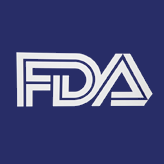FDA Approves Fluorescing Agent for Glioma Surgery
The US Food and Drug Administration has approved the optical imaging agent aminolevulinic acid hydrochloride to enhance visualization of malignant tissue during surgery for gliomas.
This is the first fluorescing agent approved by the FDA in this setting

The US Food and Drug Administration (FDA) has approved the optical imaging agent aminolevulinic acid hydrochloride (ALA HCL) to enhance visualization of malignant tissue during surgery for gliomas.
ALA HCL should only be used by neurosurgeons that have completed a training program on use of fluorescence in surgery. The agent was approved based on the efficacy results of three clinical trials and the safety analyses from five clinical trials.
The first two studies of ALA HCL efficacy were open-labeled studies comparing fluorescence to tumor status using histopathology as the reference. Study 1 included 33 patients with newly diagnosed disease and study 2 included 36 patients with recurrent disease.
Study 3 was a randomized study of 415 patients with preoperative diagnosis of high-grade glioma by MRI. Patients were randomly assigned to ALA fluorescence or to a white light control arm. In patients with confirmed high-grade glioma (n = 349), presence of fluorescence at biopsy level was compared to tumor status using histopathology as the reference.
True positive biopsies-those that were positive by histopathology and fluorescence-were found in 178, 342, and 312 tumor samples from studies 1, 2, and 3, respectively. False positive biopsies-negative by histopathology and positive by fluorescence-were found in 7, 12, and 7 patients, respectively.
Study 3 also compared the extent of resection using the two methods. “Completeness” of resection occurred in 64% of patients assigned to ALA compared with 38% of patients in the white light control arm.
In the five trials examining the safety of ALA HCL, use of the agent was associated with risks such as phototoxic reactions, hypersensitivity reactions, and interpretation errors. In addition, an increase in the extent of resection might increase the risk of serious neurologic deficits in the short term.
Adverse reactions that occurred in more than 1% of patients in the week following surgery were pyrexia, hypotension, nausea, and vomiting. One patient experienced respiratory failure due to drug overdose.
The recommended reconstituted dose of ALA HCL solution is 20 mg/kg administered 3 hours prior to induction of anesthesia. It must be used with a standard surgical operating microscope adapted with a blue light emitting light source and ancillary excitation and emission filters to visualize fluorescence excitation in the wavelength of 375 nm to 440 nm and for observation from 620 nm to 710 nm.